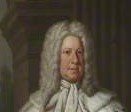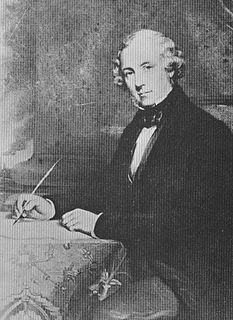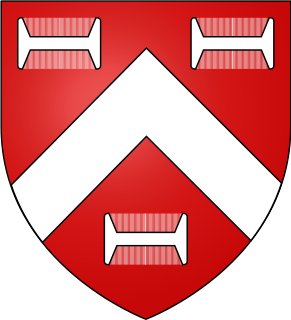| |||||
| Centuries: | |||||
|---|---|---|---|---|---|
| Decades: | |||||
| See also: | Other events of 1721 List of years in Ireland | ||||
Events from the year 1721 in Ireland.
| |||||
| Centuries: | |||||
|---|---|---|---|---|---|
| Decades: | |||||
| See also: | Other events of 1721 List of years in Ireland | ||||
Events from the year 1721 in Ireland.


Sir Josiah John Guest, 1st Baronet, known as John Josiah Guest, was a Welsh engineer and entrepreneur.

Vice-Admiral Thomas Butler, 6th Earl of Ossory, KG, PC, PC (Ire) (1634–1680) was an Irish soldier and politician. He was born at Kilkenny Castle, the eldest son of James Butler, 1st Duke of Ormond, and his wife Elizabeth Preston.

Earl of Bessborough is a title in the Peerage of Ireland. It was created in 1739 for Brabazon Ponsonby, 2nd Viscount Duncannon, who had previously represented Newtownards and County Kildare in the Irish House of Commons. In 1749 he was given the additional title of Baron Ponsonby of Sysonby, in the County of Leicester, in the Peerage of Great Britain, which entitled him to a seat in the British House of Lords. The titles Viscount Duncannon, of the fort of Duncannon in the County of Wexford, and Baron Bessborough, of Bessborough, Piltown, in the County of Kilkenny, had been created in the Peerage of Ireland in 1723 and 1721 respectively for Lord Bessborough's father William Ponsonby, who had earlier represented County Kilkenny in the Irish House of Commons.
Baron de Mauley, of Canford in the County of Dorset, is a title in the Peerage of the United Kingdom. It was created on 10 July 1838 for the Whig politician the Hon. William Ponsonby, who had earlier represented Poole, Knaresborough and Dorset in the House of Commons. He was the third son of the 3rd Earl of Bessborough, an Anglo-Irish peer, and the husband of Lady Barbara Ashley-Cooper, one of the co-heirs to the ancient barony by writ of Mauley, which superseded the feudal barony the caput of which was at Mulgrave Castle, Yorkshire, which barony by writ had become extinct in 1415. His son, later the second Baron, sat as Member of Parliament for Poole and Dungarvon.
This is a list of people who have served as the Lord Lieutenant of Kilkenny.
This is a list of people who have served as Lord Lieutenant of Carlow.

Frederick Ponsonby, 3rd Earl of Bessborough, styled the Viscount Duncannon from 1758–1793, was an Anglo-Irish peer.

Lieutenant-General Charles Butler, 1st Earl of Arran, de jure3rd Duke of Ormonde (1671–1758) was an Irish peer. His uncle Richard was the 1st Earl of Arran of the first creation. The titles were re-created for Charles in 1693. He was the younger son of Thomas Butler 6th Earl of Ossory and Emilia von Nassau. His paternal grandfather was the 1st Duke of Ormonde and his elder brother was the 2nd Duke of Ormonde.
John Butler, Earl of Gowran (1643–1677) was an MP in the Irish Parliament before being created Earl of Gowran in 1676.
Events from the year 1739 in Ireland.
Events from the year 1634 in Ireland.
Events from the year 1707 in Ireland.

The Guest family is a British family that has been prominent in business and politics since the 18th century. It was involved in the British iron and steel industry, particularly the Dowlais Ironworks in Wales, which later became part of Guest, Keen and Nettlefolds. Hereditary titles held by members of the family include Baron Wimborne, Baron Ashby St Ledgers and Viscount Wimborne, all in the Peerage of the United Kingdom.

Frederick Edward Neuflize "Eric" Ponsonby, 10th Earl of Bessborough DL, styled Viscount Duncannon from 1920 to 1956, was a British diplomat, businessman, playwright, Conservative politician, and peer.
Events from the year 1699 in Ireland.
The High Sheriff of Carlow was the British Crown's judicial representative in County Carlow, Ireland from the 14th century until 1922, when the office was abolished in the new Free State and replaced by the office of Carlow County Sheriff. The sheriff had judicial, electoral, ceremonial and administrative functions and executed High Court Writs. In 1908, an Order in Council made the Lord-Lieutenant the Sovereign's prime representative in a county and reduced the High Sheriff's precedence. However the sheriff retained his responsibilities for the preservation of law and order in the county. The usual procedure for appointing the sheriff from 1660 onwards was that three persons were nominated at the beginning of each year from the county and the Lord Lieutenant then appointed his choice as High Sheriff for the remainder of the year. Often the other nominees were appointed as under-sheriffs. Sometimes a sheriff did not fulfil his entire term through death or other event and another sheriff was then appointed for the remainder of the year. The dates given hereunder are the dates of appointment. All addresses are in County Carlow unless stated otherwise.
Events from the year 1704 in Ireland.
Events from the year 1613 in Ireland.
Events from the year 1716 in Ireland.
Events from the year 1677 in Ireland.